The post Why you need to learn Python? appeared first on Magnimind Academy.
]]>Key reasons to enroll for Python training
![]()
Here’re the most important reasons you should learn this high-level, general-purpose programming language.
- Use in data science: You’re probably aware of the fact that data science is being considered one of the most respected, prominent, and attractive career paths in the tech field these days. By completing a Python course you’ll be able to fuel your data science career as the language comes with a great number of frameworks and libraries such as NumPy, PyBrain, PyMySQL, SymPy etc that would make your job as a data science professional relatively easier.
- Use in artificial intelligence and machine learning: Similar to data science, Python is also being heavily used in machine learning as it helps to build algorithms utilizing statistics in order to enable computers to perform various actions. Some of the major Python modules that help in machine learning include Scikit-learn, Theano, Tensorflow, among others. With the help of libraries like Keras, you’ll be able to manage neural network experimentation as well.
- Simplicity: One of the biggest advantages of learning Python is its high simplicity. When you’re a beginner in coding and programming, generally you don’t want to begin with a language that comes with weird rules and tough syntax. Python isn’t only simple and readable, but it easier to setup as well as you don’t have to handle any compiler issues like C++ or classpath problems like Java. All you need to do is install Python and start exploring it.
- Robust community: Regardless of the language, a community always plays a highly crucial role when it comes to learning it. Python comes with a massive community that’ll always be there to lend you a helping hand whenever you get stuck with one or multiple issues. Today, you can easily find the solution of any of your Python related problems within minutes by doing a simple Google search.
- High prospect: As the language is growing steadily and is being adopted by a significant number of tech giants as their primary language, it makes lots of sense to obtain a Python certification in order to make your career future-proof. It’d not only make job-ready quickly but will accelerate the career growth as well.
Conclusion

Put simply, by completing a Python course you’ll never have to face a shortage of options to utilize your skills. And since a lot of tech giants rely on the language, you’ll always be in a position to make good money as a Python certification holder.
. . .
To learn more about python, click here and read our another article.
The post Why you need to learn Python? appeared first on Magnimind Academy.
]]>The post Where is Python used in the real world? appeared first on Magnimind Academy.
]]>If you’re planning to get enrolled in a Python course or online Python training program, knowing some real-world applications of Python would help you choose which specific field you want to focus on for your career. Here are the top three applications of Python:
1- Web and Internet Development
![]()
Using Python, you can easily develop web applications rapidly. Python has a number of libraries for internet protocols like XML and HTML, e-mail processing, JSON, IMAP, FTP, etc. You can even use the following libraries for a range of functions:
- BeautifulSoup – for parsing XML and HTML documents
- Requests – a client-side HTTP library
- Paramiko – For executing the SSH2 protocol
- Feedparser – for downloading and parsing Atom/RSS feeds
- Twisted Python – for asynchronous network programming
With widely used Python frameworks like Django, Pyramid, and Flask, you can enjoy unparalleled convenience, scalability, and security when working on web development compared to starting website development from scratch. With Python, you can also get microframeworks like Bottle and Flask. You can even write CGI scripts and get advanced CMSes (content management systems) such as Django and Plone CMS.
2- Machine Learning and Artificial Intelligence
![]()
Those eyeing a career in data science, machine learning (ML), and AI (Artificial Intelligence) often take up a Python certification program to fast-track their career. Apart from being extremely user-friendly and easy to earn, Python has multiple libraries that offer support for these domains. Some of these are:
- TensorFlow – an end-to-end Python ML library for performing high-end numerical calculations.
- Scikit-learn – a well-known open-source Python ML library with a wide range of clustering, classification, and regression algorithms.
- Keras – a leading open-source Python library for building neural networks and machine learning projects.
- Theano – a renowned scientific computing library that lets you classify, optimize, and assess mathematical expressions that deal with multidimensional arrays.
- PyTorch – a production-ready Python ML library with outstanding applications, examples, and use cases supported by a robust community.
NumPy, Seaborn, and Python Pandas are some other libraries that you can use.
3- Game development
![]()
Several interactive games (like Disney’s Toontown Online, Civilization-IV, Vega Strike, etc.) and 3D graphics have been developed using Python. Libraries such as PyGame (that provides functionality via computer graphics and sound libraries) and PySoy (a 3D game engine that supports Python 3) as well as frameworks for game development like PyGame and PyKyra make game development an easy and quick job.
Final words

Education, business (e-commerce and ERP systems), software development, desktop applications, and database access are some other domains where you’ll find the use of Python. So, take your pick from these fields of Python applications when you enroll for a Python certification program.
. . .
To learn more about python, click here and read our another article.
The post Where is Python used in the real world? appeared first on Magnimind Academy.
]]>The post Why Python is Essential for Data Analysis? appeared first on Magnimind Academy.
]]>![]()
How Python is used at every step of data analysis
- Numpy and Pandas: Imagine staring at a long Excel sheet with hundreds of rows and columns, from which you want to derive useful insights by searching for a specific type of data in each row and column and performing certain operations. Since such tasks are extremely time-consuming and cumbersome, Python can come to your aid. With Python libraries such as Pandas and Numpy, you can use parallel processing for such high-computational tasks, which makes the job faster and easier.
- BeautifulSoup and Scrapy: Using BeautifulSoup, you can parse and extract data out of XML and HTML files. On the other hand, Scrapy – which was originally designed for web scraping, can also be used as a general-purpose web crawler or to mine data using APIs. Since the necessary data isn’t always readily available, you can use these Python libraries to extract data from the internet, which would help in data analysis.
- Seaborn and matplotlib: Instead of seeing a lot of data jumbled on a screen, it’s much easier to visualize the data in the form of pie-charts, bar graphs, histograms, etc. Such pictographic representation or visualization of the data helps in deriving useful insights quickly and easily. Here again, Python libraries can come to the rescue. Using Seaborn (which is a matplotlib-based Python data visualization library) that provides you with a high-level interface for drawing informative and attractive statistical graphics, you can easily visualize data and draw useful insights. Apart from being equipped with beautiful default styles, the statistical plotting library of Seaborn is also designed to work extremely well with the Pandas dataframe objects.
In addition, using Python would mean having scikit-learn (a machine learning library), which would help in complex computational tasks involving probability, calculus, and matrix operations over thousands of columns and rows. For data analysis involving images, OpenCV (which is an image and video processing library used with Python) can help.
. . .
To learn more about python, click here and read our another article.
The post Why Python is Essential for Data Analysis? appeared first on Magnimind Academy.
]]>The post What is the Python Programming and the content of Python Certification? appeared first on Magnimind Academy.
]]>1- Key features of Python programming language
![]()
The huge popularity of Python programming language heavily relies on the unique features offered by it. Let’s have a look at the features of Python that set it apart from other programming languages.
1.1- Simple to learn
![]()
Python is highly simple to get started with. It comes with a simple setup, easy to understand syntax and many practical applications that are heavily needed in web development. The syntax is relatively simple compared to other languages and a bunch of modules can be imported to make the code much shorter. There’re some straightforward, excellent tools available to work with Python code, particularly the interactive interpreter. It eliminates the need for learning special text editor, IDE, or anything else to begin using Python programming language. All you need to have a command prompt together with the interactive editor.
1.2- A beginner’s language
![]()
For a beginner in the programming domain, starting with a language which is difficult to learn not only slows the pace of the learning but brings additional complexity also. With Python programming language, a beginner can be introduced to the fundamental concepts like procedures and loops quickly and probably can work with user-defined objects in his/her initial stage of learning. Python’s hug syntactical simplicity lets a beginner use advanced or basic concepts, without much boilerplate code which is common in many other languages.
1.3- Interpreted language
![]()
If you’re familiar with programming languages like Java or C++, you’re probably aware that in order to run them, you’ve to compile them first. But in Python programming language, there’s no need to compile it. All you need to do is run the Python code without thinking about linking to libraries. Here, interpreted means the source code isn’t executed all at once, instead it’s executed line by line, which makes it easier to debug the code. In Python, the source code gets converted into ‘bytecodes’ which is then translated into the native language of a specific computer.
1.4- Object-oriented language
![]()
A programming language, which comes with the ability to model the real world, is considered object-oriented. It concentrates on objects and merges functions and data. Python has object-oriented features. Class mechanism of Python adds classes with a minimum number of new semantics and syntax. Here, multiple inheritances are also supported.
1.5- Free and open-source
![]()
Python programming language is freely available which means it can be downloaded from the official site by anyone. Python being open-source means you can read its source code, modify it, use pieces of it, and distribute copies of it freely.
1.6- High-level language
![]()
Python is a high-level language which means programmers don’t need to remember its system architecture or manage the memory. This feature makes Python highly programmer-friendly.
1.7- Portable language
![]()
Let’s consider you’ve written code in Python programming language for a Mac machine and you want to run it on a Windows machine. There’s no need to make changes to perform it, meaning you can take a single code and run it on any other machine without having to write separate codes for separate machines. This portability is another key feature of this language.
1.8- Extensive libraries
![]()
Python programming language comes with extensive libraries which can be used to eliminate the need of writing own code for each and every single thing. There’re libraries for unit-testing, documentation-generation, regular expressions, databases, web browser, image manipulation, image, and a lot more.
1.9- Extensible language
![]()
Some of the Python code can be written in other languages such as C++ if required. This feature makes Python an extensible language which means you can extend it to other languages.
2- Why you should learn Python programming language?
![]()
We’ve already seen that Python programming language is surprisingly easy to learn and you can use it as your stepping stone into other frameworks and programming languages. Across the globe, Python is heavily used by some giant companies like Google, IBM, Nokia, Pinterest, Disney, Instagram, and many others. Since a lot of giant organizations depend on it, it’s extremely likely that you’ll never have a paucity of ways to earn good money using your Python skills. If you’re still feeling hesitant whether you should learn Python programming language, have a look at the following advantages that you’d be able to enjoy once you become a master of it.
2.1- Data science
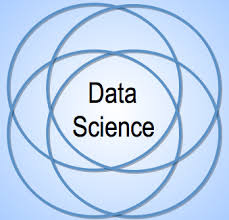
This is the biggest reason you should focus on learning Python programming now. Though R was considered perfect for data science tasks till sometime back, with lots of frameworks and libraries Python has become the most preferred language among data scientists across the globe these days. In addition, you can a lot more with Python than R. For instance, you can automate staff, create scripts, step into web development etc once you become a master in Python programming language.
2.2- Machine learning
![]()
This is the second most important reason to learn Python now. The exponential growth of machine learning has attracted a huge number of businesses to leverage this technology. With algorithms becoming sophisticated day by day, we can expect to see more advanced and diverse implementations of machine learning in the technology domain. If you want to play around machine learning or do a pet project, Python is the only major language that makes it easy.
2.3- Web development
![]()
With lots of good frameworks and libraries, Python programming language makes web development actually easy. For example, you can complete a task in minutes on Python, whereas it’ll take hours to be completed in PHP. There’s a huge number of web developers who’re using Python frameworks like Flask and Django to develop web applications in minimum time.
2.4- Massive community
![]()
This is another key reason to start your programming career with Python programming language. Presence, as well as the size of the community, can act as a great differentiator when you’re learning something new. You can find the answer to almost any of your queries related to Python in minutes with the help of its communities.
2.5- Multipurpose
![]()
Another key factor behind the huge popularity of Python is its multipurpose nature which means it’s not tied to only a single thing. For example, R is good on machine learning and data science but fails to add any value when it comes to web development. By learning Python programming language you’ll be able to do a lot of things: from doing data analysis to creating web applications to automating tasks to writing scripts.
2.6- It pays well
![]()
When it comes to salary, Python professionals belong to some of the highest paid groups in the industry, especially those working in the machine learning, data science, and web development domains. While tech salaries greatly differ from one region to another, they stay in a very good range, anywhere between 70K and 150K based on the domain, location, and experience.
2.7- High demand
![]()
Based on popular job portals, it looks like having a Python programming certification under your belt can greatly help you get a decent job within a short time. In addition, the demand has increased exponentially these days because of the widespread implementation of data science and machine learning.
3- Things to know about the content of Python certificate
![]()
Having a Python certification gives you a competitive advantage when you appear in front of the hiring managers. While competitions in the technology domain are rigorous, having such a certification can change the scenario completely for you. A Python programming certification demonstrates that you not only have a robust understanding of the language but are determined to improve your skillset as well. In addition, having a certification greatly helps you move up the corporate ladder quickly. Lastly, by obtaining a Python programming certification you’ll be able to earn significantly more than those who don’t. If you’re interested to know about what you’ll learn by completing a Python certification course, here’s an overview of the content of Python certificate programs.
- Introduction to and importance of Python
- Introduction to Python programming language semantics, syntax, runtime environment etc
- Understanding operations, functions, class defining etc
- Understanding Hadoop deployment
- Understanding machine learning algorithms in the context of Python
- Working on real-life projects running on Python
Python programming certification course can be taken by Project Managers and BI Managers, Software Developers, Big Data Professionals, Analytics Professionals, and anyone interested to build a career in Python. Beginners without any previous programming experience can also take up a Python certification course to step into the technology field quickly.
Conclusion

However, it’s extremely important to complete your Python programming certification course from a reputed institute. Things you need to review meticulously include the content of Python certificate program, whether the course is designed by industry professionals, facility to receive hands-on experience, job assistance after successful completion of the program, among others.
. . .
To learn more about python, click here and read our another article.
The post What is the Python Programming and the content of Python Certification? appeared first on Magnimind Academy.
]]>The post How and Why Python is a part of Data Science? appeared first on Magnimind Academy.
]]>To accomplish this goal, data science professionals need the finest tools to leverage advanced techniques that can turn data into actionable insights. There’re some prominent languages like Java, C, C++ etc that can be used to make meaning out of data. However, Python has emerged as the most popular programming language used for data science, a StackOverflow survey revealed.
1- How is Python related to data science?

In the coding world, Python is considered as a kind of Swiss Army Knife. It supports structured programming, object-oriented programming, functional programming patterns, and more. For example, Google has developed TensorFlow, a deep learning framework that has been created using Python as the primary language.
Apart from Google, other tech giants like Netflix, Facebook, NASA etc have been using Python as a prominent language for a long time. There’re some particular situations where this language is the most appropriate data science tool to perform the job. For example, it’s perfect when statistical code is needed to be incorporated into the production database or when data analytics tasks need integration with web apps. The full-fledged programming nature of this language makes it an ideal fit for implementing algorithms.
2- How is Python involved in every stage of data science?

Let’s consider the goal of data science professionals once again – derive actionable insights from data. To accomplish this, some computational tasks are needed to be performed. Here, Python libraries like NumPy and Pandas can be used to perform the job quickly.
Data may not be readily available to data science professionals, so it needs to be scraped from the web. Here Python libraries like BeautifulSoup can be used to extract data from the web.
In order to drive insights, visualization of the data is a must. Here, libraries like Matplotlib are used to represent data in the forms of pie charts, graphs, and other formats.
The next stage is machine learning where tasks are made efficient and easy by using Python libraries like Scikit-learn.
3- Why is Python heavily preferred in the data science landscape?

Python is open source and free, and thus anyone can write a library package in order to extend its functionality. And data science is the field that has experienced the advantages of these extensions. Just to give you an idea of the popularity of Python in the data science field – 66% of data scientists reported using it daily, in 2018. Now, you may ask that what’s so special about Python? Let’s have a look.
3.1- Easy to learn
![]()
Python is widely considered as a beginner’s language because it doesn’t have any difficult learning curve, and a developer with fundamental knowledge can work with Python. If you compare it other languages used in data science like R, Python comes with a shorter learning curve and beats the competition by offering an easy-to-understand syntax. In addition, code implementation is less in Python, so data science professionals can spend more time to focus on the algorithms.
3.2- A wide range of data science libraries

One of the major factors that helped Python to take the most sought after place in the data science field is its wide range of libraries that can be used for analysis, visualization, scientific computing etc. Let’s quickly discuss some of them.
- Pandas: This Python library is used for data analysis and manipulation and it’s well suited for different data like tabular, matrix, among others.
- NumPy: NumPy or “Numerical Python” is a core Python library used for data science. It’s used for scientific computing and as a multi-dimensional container where data science professionals can perform various NumPy operations together with special functions.
- Scikit-learn: It’s one of the major attractions of Python where machine learning can be implemented. This free library contains efficient and simple tools for data mining and analysis purposes.
- Matplotlib: This is a plotting library for data visualization in Python. It’s used in Python scripts, web application servers etc.
- PyBrain: It’s another machine learning library of Python that offers modules for developing neural networks.
3.3- Scalability
![]()
Python has emerged as a scalable language compared to other languages like R. Python’s scalability lies in its flexibility that it offers to solve problems. As a result, it has been used by different industries to develop tools and applications of almost every kind.
3.4- Python community
![]()
One of the biggest reasons behind the exponential growth of Python is its massive community. There’re millions of users who’re happy to offer suggestions or advice when a Python learner get stuck on something. And chances are, someone else has already been stuck there at some point of time.
3.5- Huge amount of Python resources
![]()
As Python has become extremely prevalent in the field of data science, there’re lots of resources which are specific to using Python in the context of data science. Meetup groups for data science professionals using Python can be found across the globe.
3.6- Python and machine learning

In the data science field, machine learning is one of the major elements utilized to maximize the value from data. With Python as a major data science tool, exploring the fundamentals of machine learning becomes effective and easy. Put simply, machine learning heavily encompasses mathematical optimization, statistics and probability, and Python has become one of the most sought after machine learning tool that lets aspiring professionals do the math easily.
Apart from all these, Python comes with varied visualization options that help in creating graphical layouts, web-ready plots, charts, among others.
4- Simple steps to learn Python for data science
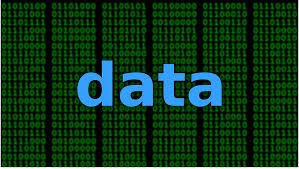
Today it’s evident that the future is extremely bright for data science professionals and learning Python is just the right thing to get your journey toward the field started. Let’s have a look at the steps.
4.1- Master Python basics
![]()
First of all, you need to get the basics right to learn Python. There’re lots of ways to accomplish this – from taking a course to self-teaching to watching tutorials. However, we strongly suggest taking a course for this purpose. And if you’re looking to enter the data science field, look for courses that are particularly designed to teach you Python in the data science context. During this stage, try to join a learning community where you can find like-minded people passionate about Python.
4.2- Learn Python libraries used in data science

Once you’ve gained a solid understanding of Python fundamentals, it’s time to learn Python libraries that are used in data science. The most important of these include Pandas, NumPy and Matplotlib. If you get stuck somewhere, seek help to a Python community and most likely you’ll get it.
4.3- Develop a data science portfolio
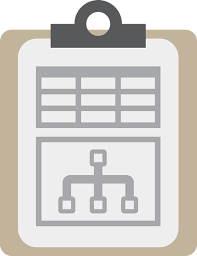
Assuming you’re planning to enter the data science field, a proper portfolio is a must. Your experience in working on different datasets should be clearly mentioned. This not only gives your fellow learners something to collaborate on but also demonstrates the future employers that you’ve actually invested your time to learn Python. During this stage, you should start working on developing other data science essentials like soft skills.
4.4- Learn advanced data science techniques
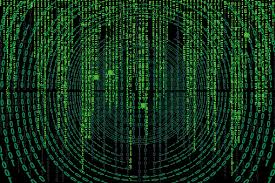
This is the stage where you should be learning advanced Python and data science techniques. Ideally, you should take an advanced course from a reputed institute. There’re different options available like taking free online courses, learning by reading books, attending an immersive data science bootcamp etc. However, if you truly want to ensure that you’ve covered all the points and want to be job-ready quickly, enrolling with a data science bootcamp should be your best bet. That way, you’ll not only be able to pursue your dream at a relatively affordable rate but will be able to develop some greatly useful connections as well.
4.5- Keep on learning
![]()
The field of data science is evolving quickly and the technologies and skills that are necessary to become a data science professional may not be the same tomorrow. So, you need to continue learning for both Python and data science fields to maintain a competitive edge.
In conclusion

For the above reasons and others, Python is so much beloved by data science professionals and programmers. Data science aspirants often come from different backgrounds other than computer science and feel extremely overwhelmed by the difficulty level of the field. But Python’s inherent simplicity and readability make it comparatively easy for them to pick up the learning pace. Also, the huge number of available dedicated analytical libraries means that data science professionals in almost every industry will find packages tailored to their needs already.
. . .
To learn more about Python, click here and read our another article.
The post How and Why Python is a part of Data Science? appeared first on Magnimind Academy.
]]>The post 7 Reasons to have a Python Certification appeared first on Magnimind Academy.
]]>But have you ever wondered why experts emphasize on getting a Python certification? In this post, you’ll know about the seven key reasons why you should obtain it.
1- What is a Python certification?
![]()
Python certification is something that one should try to get if he or she wants to improve his/her knowledge of the programming language and demonstrate the proof of his/her expertise. There’re some people who may have knowledge of the fundamentals of the language but don’t know about it in detail. In that scenario, once they get their Python certification, it proves that they’ve a robust understanding of Python.
Today, Python is considered as one of the most in-demand and popular programming languages. Whether you want to be a web developer or a data science professional, it makes sense to obtain a Python certification. Let’s have a look at the factors that have propelled this certification to such an excellent position.
2- Key reasons to have a Python certification
![]()
As Python has gained tremendous popularity over the recent years, a large number of organizations, regardless of their volumes, have started accepting it as their primary language when it comes to writing various codes and developing different applications. This has led to a significant number of organizations hiring candidates with Python certification. Here’re seven major reasons to focus on getting this certification.
2.1- You’ll have a greater chance of stepping into the field of data science

Python certification is hugely recognized by a lot of organizations that work with data. In fact, it’s the leading language embraced by a majority of data scientists. Though for years, private researchers and academic scholars were using MATLAB language for their work, everything started to change with the emergence of Python numerical engines like “Pandas” and “NumPy”.
Today, there’re some organizations that have made Python certification mandatory when they offer positions related to data science. Keeping in the mind the excellent pay coupled with other benefits offered to data science professionals, it pays to get a Python certification.
2.2- You’ll be able to enter the machine learning field
![]()
This is another key reason why you should try to get a Python certification. In the last few years, we’ve experienced exponential growth in the field of machine learning and today, it’s rapidly changing almost everything around us. From sophisticated algorithms to smart chatbots that can promptly answer queries – machine learning is transforming the way the world does business.
If you’re interested in machine learning, getting a Python certification is probably the best thing you can do to make the journey easier. Though Java also contains machine learning libraries, Python is more content-rich as the developer community prefers it over any other language when it comes to machine learning.
2.3- You’ll be able to enter web development
![]()
There’re countless web developers who prefer Python over other languages because it comes with a wide range of libraries and frameworks that make the work really easy for them. For example, a task that may take hours in another programming language can be accomplished by the developers within minutes with Python.
Owing to Python’s user-friendliness, it has been used to develop some of the most famous websites like Google, YouTube, Dropbox, Reddit, Instagram, and Spotify, among others. Looking at these websites, it won’t be an overstatement to say that it really pays to have a Python certification. Python offers the ideal way of developing websites and if you’re an aspiring web developer or programmer, you shouldn’t think twice giving yourself the chance to excel in your web development career by having this certification.
2.4- You’ll have the ability to earn more money
![]()
Even if you don’t want to enter the data science field, having a Python certification means you’ll be able to earn substantially more money than those who’re not certified. It’s a common fact that usually, earning more money requires more credentials and that’s exactly what a Python certification does to your profile. Getting a Python certification will surely need you to spend some money but once you become certified, you can switch to a high-paying job or ask for a raise at your present company.
In addition, Python certification plays a key role in the hiring process and is often considered as a great tool for screening and selection purposes. It helps to make your resume stand out of the competition, which would greatly increase your chances of getting a high-paying job because professionals with Python certification bring great value to the organization they work for.
2.5- Simplicity matters a lot
![]()
If you’re a beginner to the programming world, this is probably the biggest reason why you should focus on getting a Python certification at first. Python is exceptionally easy to learn and you can use it as a stepping stone for learning other languages and frameworks. As a beginner, you definitely want to start with something that’s relatively easy to master upon and Python ticks that box perfectly because it doesn’t come with complicated rules and difficult syntax.
2.6- Support from the community
![]()
When you’re trying to get a Python certification, it’s obvious that you’ll encounter problems in the learning process. Since Python is an open source language, it comes with a massive support base. Millions of developer work hard with it on a regular basis.
Whenever you’re learning something, a great community support is most probably the biggest thing you’ll need to excel in the field. Whenever you get stuck with an issue while mastering Python, you’re most likely to find a helping hand, thanks to the vast and active Python community.
2.7- Multipurpose application
![]()
One of the biggest advantages about learning Python and trying to get a Python certification is its multipurpose application. Python isn’t just tied to one thing. For example, R is only good at machine learning and data science but it doesn’t come into the picture when you work in the field of web development.
On the other hand, having a Python certification proves your expertise in the language and indicates that you can use it to do different things. From entering the fields of data science or machine learning or web development to automating your day to day tasks – a lot can be done using Python.
3- Things to keep in mind when you’re trying to get a Python certification
![]()
Your road to get a Python certification won’t be easy. So, we’ve put together our best tips here that would make this journey of yours relatively easy.
3.1- Code consistently
![]()
Consistency plays a crucial role when you’re learning Python or any other language for that matter. Try to code everyday to help develop your muscle memory. Though it may seem a little bit difficult initially, starting small and increasing it incrementally will gradually make it easier.
3.2- Learn together with others
![]()
Many may consider coding as a solitary activity, but in reality, it works the best when you learn together. So, in your effort to get a Python certification, try to surround yourself with others who’re learning Python. It’ll let you share the knowledge you gain along the way.
If you don’t know anyone, there’re lots of ways to find others who’re passionate about learning Python. For example, you can attend local meetups or events and join learning communities to find Python enthusiasts like you.
3.3- Try to develop something
![]()
When you’re preparing to get a Python certification, small exercises can turn out to be extremely helpful in making you confident with the language. Once you’ve gained a strong understanding of the fundamentals of Python, you should try to develop something. The successful effort of developing something is actually what teaches you the most. You should remember that most of your learning will come from developing something using Python.
3.4- Try to do pair programming
![]()
Pair programming refers to the technique where two developers work at a single workstation to accomplish a task. It not only gives you a chance to have your code reviewed by someone, but also lets you observe how someone else may be thinking about a problem. This approach makes you exposed to multiple ways and ideas of thinking, which in turn would help you to improve your own problem-solving skills when you get back to solitary coding.
Final takeaway

We hope that by now, you’ve got a clear understanding of why you should get a Python certification. Remember that having a Python certification not only boosts your marketability but also adds great amount of value to the company you work for.
It acts like a recognized benchmark of knowledge and skills that augments the company’s reputation. And that’s probably the main reason why lots of companies not only focus on recruiting candidates with Python certification, but also encourage their existing employees to obtain one so that they can take a measurable advantage. Though there’re several ways to prepare for and get a Python certification, we strongly suggest you to do it from a reputed institute to make the journey relatively easier.
. . .
To learn more about Python, click here and read our another article.
The post 7 Reasons to have a Python Certification appeared first on Magnimind Academy.
]]>The post Python Certification with 7 Steps appeared first on Magnimind Academy.
]]>- In 2018, Python came out on top in the Programming language Hall of Fame of TIOBE.
- In 2018, Python occupied the top position, as revealed by a survey conducted by IEEE on the best programming languages.
Having a Python certification gives you a clear advantage when the employers look at your resume. It’s a proof to the employers that you have the necessary expertise to fulfill certain duties. It’s also a sign for them that you’re willing to expand your knowledge.
As professionals with Python certification are able to contribute to a business’s productivity, efficiency, and profit-making capacity directly, they’re considered as great assets for any organization. Once you’ve earned this certification, you’ll also be able to move onto a more rewarding and higher paying job than what you’re doing now.
The key thing is to enjoy the competitive advantage of having a Python certification, but you’ve to learn it at first. In this post, we’re going to discuss the seven steps that are crucial to make yourself prepared for earning a Python certification.
Surely, there’re some good schools like Magnimind Academy that offer excellent Python certification course content designed by industry professionals to help you get the best jobs. But it would always help to have a robust understanding of the initial steps to complete the Python certification training successfully and easily.
Different approaches to get a Python certification

There’re two different methods you can use to get a Python certification. Here’re the most popular ones among them.
Online approach

When it comes to Python certification, doing a good course from a reputed online school would probably be your best bet. There’re several online courses that can help you master this programming language.
From courses designed for beginners to courses that suit the needs of professionals – you can take your pick according to your preferences and requirements. Once you’ve earned a Python certification, these schools also help you scale up to more advanced courses like courses on data science, machine learning courses etc.
Offline approach

There’re some schools that help you earn a Python certification in a traditional environment. But this avenue takes significantly more time and usually a good chunk of money compared to online schools. So, if you cannot afford either of those, the online approach is what you should opt for.
How to prepare yourself to earn a Python certification with 7 simple steps

Learning and becoming a master in any programming language can seem quite intimidating and Python is no different. It’s always recommended to get a solid understanding of the building blocks before you enroll with a school to earn a Python certification. Let’s have a look at these seven steps.
Step 1: The beginning

Assuming you’re an absolute beginner, this is the first step toward earning a Python certification. By absolute beginner, we mean someone who doesn’t have any knowledge about any programming language. At this step, a majority of the concepts that you’ll be learning are programming concepts in general. It means that these concepts aren’t actually exclusive to Python but are applicable for other programming languages also.
It’s important to note that many programming languages bear similarity to a good extent and learning what’s common between them will not only help you learn Python relatively easier but will even facilitate your future transitions into different programming languages. Some of these basic concepts include data types, variables, functions, operations, loops, and conditionals, among others.
Step 2: Figuring out the motivational factor

Before you start your journey to earn a Python certification, it’s worth figuring out why you actually want to learn Python. This is important because sometimes, the journey becomes difficult and without enough motivation, you may not make it through.
In this step, you should figure out a general area you’re interested to work in after finishing the Python certification. These areas may include data science, websites, mobile apps, games, scripts to automate your tasks etc. Pick one or multiple areas that interest you and you’ll be directing your learning toward them.
Step 3: Understanding the basic syntax

Learning the basics of Python syntax is a must before you move forward to earn a Python certification. There’re some good resources that can help you learn these basics. For example, Magnimind Academy does an excellent job of teaching basic syntax and moving forward from there. Though the learning process may not seem very motivating, enrolling with a good school can help you sail through it.
Step 4: Making projects
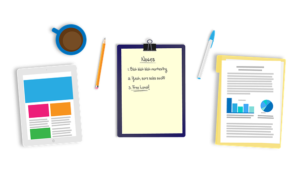
Once you’ve got a solid understanding of the basic syntax, you can start making projects independently. Projects offer an excellent way to learn as they let you apply the knowledge you’ve gained. Projects will help you learn new things, push your capabilities, and help you develop your portfolio.
It’s important to note that at this step, you’ll get stuck frequently. So, be prepared to turn to your Python certification program instructors a lot. Some schools allow you to do structured projects that let you develop interesting things in your preferred areas without getting stuck. If you’re doing the Python certification to step into the field of data science, try to do some structured projects in that area. When it comes to resources, try to find out a school like Magnimind Academy, for example, that lets you learn Python and data science interactively.
Step 5: Diving deeper

Once you’ve some completed structured projects under your belt, it’s time to move further ahead. With a good school as your Python certification program resource, you should be able to feel comfortable in handling problems and errors with your programs. Here again, you should work on areas that interest you.
At this level, apart from seeking help from your Python certification program instructors, you should consult various Python communities and websites that have good reference materials on the language. You can also try to visit Python meetups and find professionals who’re working on different interesting projects. One important thing to remember is that you should start small to gain confidence. See if the school, where you’re doing the Python certification program from, offers guided projects that let you perform small data science-related tasks.
Step 6: Time to do something harder

Once you’ve gained complete confidence on what you’re developing, it’s time to increase the scope and difficulty of your projects. Some tips to increase your competence level include trying to make the program run faster, make the tool useful for more people, scale up the tool, and guide a beginner on how to develop a project that you’ve made earlier, among others.
Step 7: Learning advanced Python

If venturing into the world of Python confidently and taking your skills to the next level is two of your key goals, you should try to learn the advanced aspects of the concepts you’ve already learned until now. However, you should remember that this step assumes that you’ve a robust understanding of the basics of the language. In addition to this, you’ll also learn some new concepts like Metaprogramming, Control Flow, and Higher-order Functions, among others.
These are the fundamental steps to earn a Python certification. Let’s have a look at why organizations keep looking for professionals with Python certification.
The importance of Python certification to businesses

Certified Python professionals bring a huge amount of value to a business and that’s why a majority of organizations keep encouraging their employees to undergo Python certification courses.
Employees with Python certifications are not only considered to have achieved the recognized benchmark for a business skills framework, but also ensure that teams working on different projects are trained to leverage such skills to the fullest for optimum results. It’s, therefore, in the best interests of an organization to help their employees pursue Python certification programs.
Such an approach leads to faster development of their employees’ programming skills that translates into streamlined processes directly, as well as help develop best practices and higher standards in the organization. Put simply, professionals with Python certifications not only help an organization to earn more, but also add to its reputation.
Final thoughts

You should always remember that earning a Python certification doesn’t put an end to learning. Instead, you should consider it as the beginning. The world of Python is evolving constantly. So, you’ll need to learn and work on projects constantly. Working on the things that truly interest you means you’ll never get bored or burned out.
Python is really a rewarding and fun language to learn, and you can surely achieve a great level of competency with the help of a good institution. Finally, regardless of the level you’re at right now, get ready to put in the requisite effort to earn your Python certification.
. . .
To learn more about Python, click here and read our another article.
The post Python Certification with 7 Steps appeared first on Magnimind Academy.
]]>